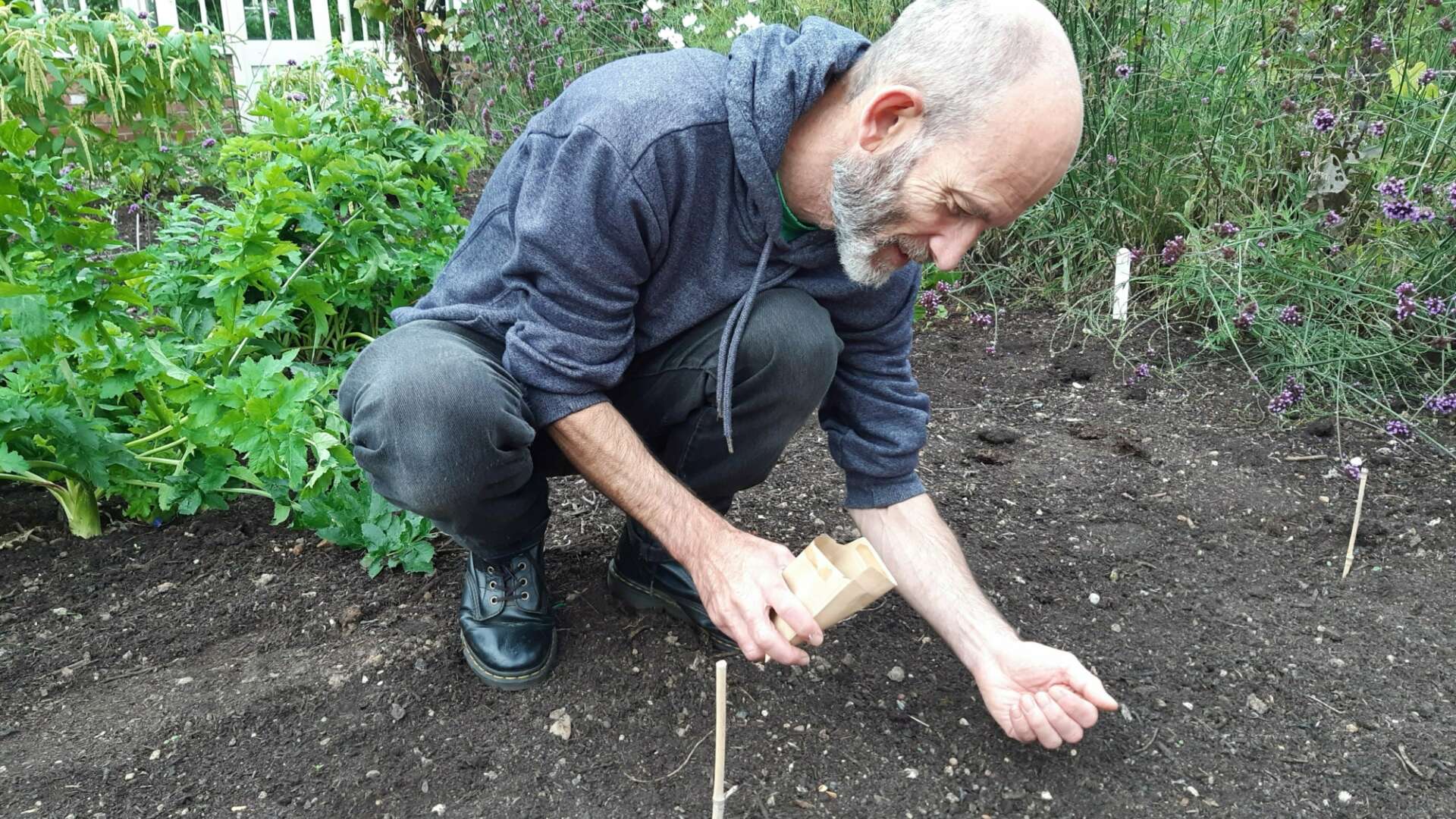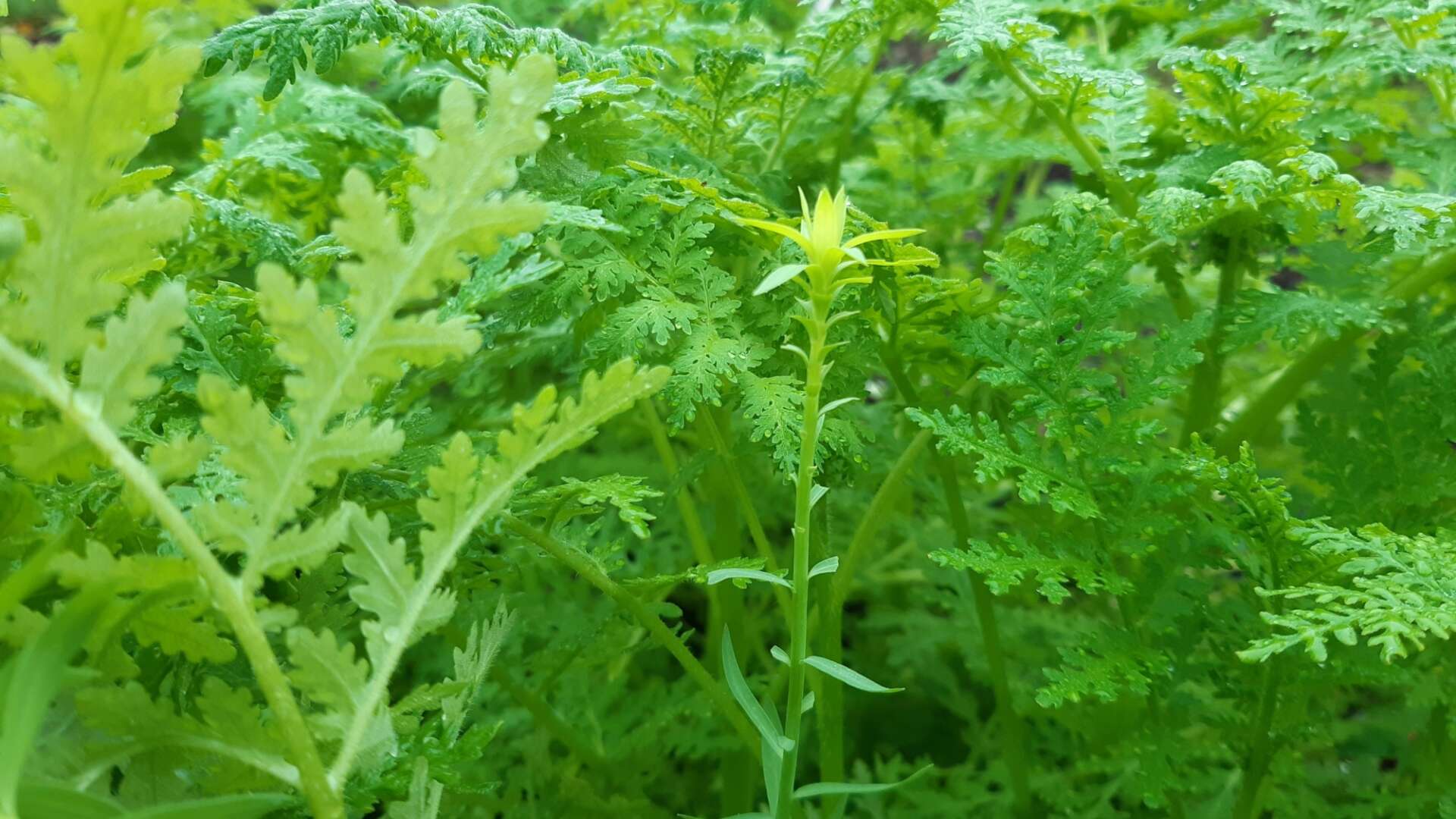Experimenting with a winter green manure mix for gardeners

The standard green manure mix of grazing rye and vetch that’s frequently grown as an overwinter green manure is very dependable but it can be tough to incorporate in the spring, especially for gardeners practising no-dig methods.
So in 2022, we devised an experiment to compare an alternative ‘Gardeners’ Mix’ containing five different species (vetch, forage pea, crimson clover, phacelia, flax) with the standard grazing rye and vetch mix. The green manure species chosen for this trial were selected for their complimentary growth properties.
Benefits of overwinter green manure mixtures
Winter green manures are plants grown to protect the soil over winter. They are sown in autumn, then incorporated into the soil in the spring. They protect the surface from the action of heavy rain so reduce the chance it will develop into a hard, non-permeable crust in drier weather [1&2]. They also help to retain nutrients by stopping them from being washed out of the soil by the rain [3&4].
Additionally, green manure mixes can provide a number of positive benefits over growing a single species alone. The Organic Research Centre carried out a large project from 2008-2013 examining the use of diverse species mixtures at a range of sites.[5]
The key message from the study was that no species scored highly in all evaluation criteria but each green manure emphasised the positive qualities of the other mixes under a range of sites and conditions. The mixes also showed increased ground cover and biomass production and a reduction in weeds compared to growing single species.
Possible reasons for this are that legumes in the mix can transfer nitrogen into the soil when live roots produce exudates - tissue fluid - that leak out into the soil [6&7] when roots decompose [8&9] or through mycorrhiza [10&11]. This nitrogen feeds the non legume and helps it to grow more quickly.
A non-legume plant can also stimulate the legume to fix more nitrogen as the non legume takes up nitrogen removing any soil build up that could suppress nitrogen-fixing bacteria. [12&13]

How the mixes grew
In the unusually mild autumn of 2022, both the standard rye-vetch mix, and the Gardeners’ Mix got off to a good start. The Gardeners’ Mix showed significant ground coverage and ease of digging in compared with the standard rye.
At our organic demonstration garden, all five of the species in the Gardeners’ Mix emerged but the phacelia dominated rapidly, and the mild weather led to a large amount of lush growth. This was killed off by a sudden and prolonged period of frost and snowfall in December. The rye and vetch mix was much more resilient and continued to grow into the spring of 2023, although the mix was nearly all rye with very little vetch. Having a mix of species in the Gardeners’ Mix helped it adapt as the crimson clover started to make a comeback in the early spring.
Incorporating the mix
Up to 46 per cent of people in our study used a no-dig technique to incorporate their green manure, showing a strong interest in this type of growing. Up to 70 per cent of the participants found the rye and vetch contained some tough material and conversely 90 per cent found the Gardeners’ Mix contained mostly soft material, especially as much of the material had died off, making it easier to incorporate.
Due to the unusual climatic conditions in 2022, it was difficult to gather conclusive results from this first trial of green manure mixes - so we're pleased to be conducting a repeat of this experiment in 2023.
We're keen to see how they perform a second time and will keep you posted on the results via our Members’ Experiment pages.
References
[1] Williams, W. A., & Doneen, L. D. (1960). Field infiltration studies with green manures and crop residues on irrigated soils. Soil Science Society of America Journal, 24(1), 58-61
[2] McGuire, A. M. (2003). Mustard green manures replace fumigant and improve infiltration in potato cropping system. Crop Management, 2(1), 1-6.
[3] Tosti, G., Benincasa, P., Farneselli, M., Tei, F., & Guiducci, M. (2014). Barley–hairy vetch mixture as cover crop for green manuring and the mitigation of N leaching risk. European Journal of Agronomy, 54, 34-39
[4] Fowler, C. J. E., Condron, L. M., & McLenaghen, R. D. (2004). Effects of green manures on nitrogen loss and availability in an organic cropping system.
[5] Organic Research Centre PDF.
[6] Lesuffleur F, Cliquet JB (2010) Characterisation of root amino acid exudation in white clover (Trifolium repens L.). Plant Soil 333:191– 201. doi:10.1007/s11104-010-0334-1
[7] Burity HA, Ta TC, Faris, MA, Coulman BE (1989) Estimation of nitrogen fixation and transfer from alfalfa to associated grasses in mixed swards under field conditions. Plant Soil 114:249–255.
[8] Fustec J, Lesuffleur F, Mahieu S, Cliquet JB (2010) Nitrogen rhizodeposition of legumes. A review. Agron Sustain Dev 30:57– 66.
[9] Louarn G, Pereira-lopès E, Fustec J et al (2015) The amounts and dynamics of nitrogen transfer to grasses differ in alfalfa and white clover-based grass-legume mixtures as a result of rooting strategies and rhizodeposit quality. Plant Soil 389:289–305.
[10] Haystead A, Malajczuk N, Grove T (1988) Underground transfer of nitrogen between pasture plants infected with vesicular-arbuscular mycorrhizal fungi. New Phytol 108:417–423.
[11] Johansen A, Jensen ES (1996) Transfer of N and P from intact or decomposing roots of pea to barley interconnected by an arbuscular mycorrhizal fungus. Soil Biol Biochem 28:73–81.
[12] Schipanski, M. E., & Drinkwater, L. E. (2012). Nitrogen fixation in annual and perennial legume-grass mixtures across a fertility gradient. Plant and Soil, 357, 147-159.
[13] Hatch, D. J., Goodlass, G., Joynes, A., & Shepherd, M. A. (2007). The effect of cutting, mulching and applications of farmyard manure on nitrogen fixation in a red clover/grass sward. Bioresource Technology, 98(17), 3243-3248.